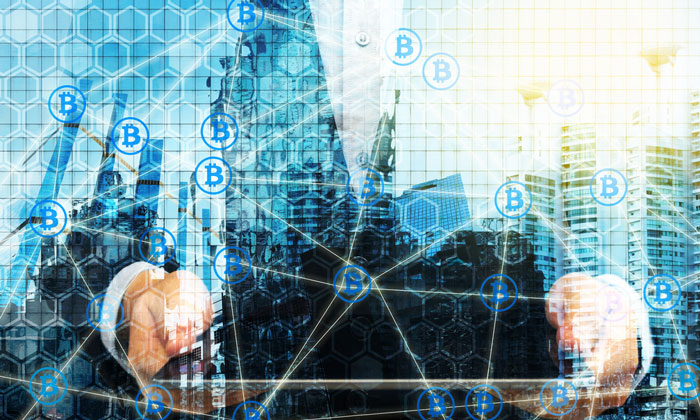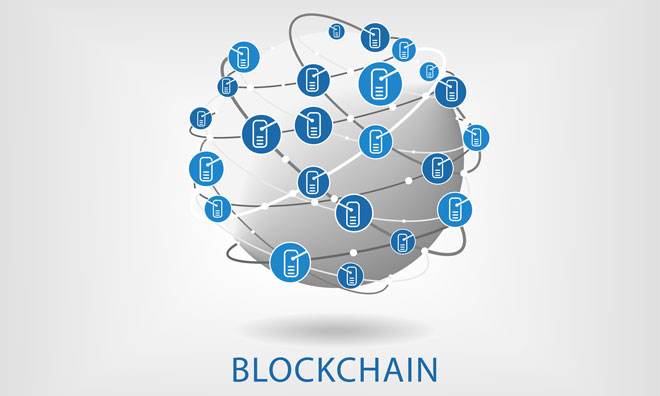Blockchain: A concise, comprehensive guide to everything you need to know
- Like
- Digg
- Del
- Tumblr
- VKontakte
- Buffer
- Love This
- Odnoklassniki
- Meneame
- Blogger
- Amazon
- Yahoo Mail
- Gmail
- AOL
- Newsvine
- HackerNews
- Evernote
- MySpace
- Mail.ru
- Viadeo
- Line
- Comments
- Yummly
- SMS
- Viber
- Telegram
- Subscribe
- Skype
- Facebook Messenger
- Kakao
- LiveJournal
- Yammer
- Edgar
- Fintel
- Mix
- Instapaper
- Copy Link
Posted: 24 February 2017 | Bernard Marr | Advanced Performance Institute | No comments yet
What is blockchain? Why is everyone talking about it? Just how might it impact upon aviation and the airport industry?
Blockchain, recently named by International Airport Review as one of the 6 technologies to revolutionise the airport and aviation industry in 2017, is without a doubt one of the most talked about technologies in the world at present.
We asked Bernard Marr, a leading business and data expert and Chief Executive at the Advanced Performance Institute to offer a general, concise yet detailed guide to everything you might need to know about blockchain technology from a general standpoint.
You may have heard the term ‘blockchain’ and dismissed it as a fad, a buzzword, or even technical jargon. But I believe blockchain is a technological advance that will have wide-reaching implications that will not just transform the financial services but many other businesses and industries.
A blockchain is a distributed database, meaning that the storage devices for the database are not all connected to a common processor. It maintains a growing list of ordered records, called blocks. Each block has a timestamp and a link to a previous block.
Cryptography ensures that users can only edit the parts of the blockchain that they “own” by possessing the private keys necessary to write to the file. It also ensures that everyone’s copy of the distributed blockchain is kept in synch.
Imagine a digital medical record: each entry is a block. It has a timestamp, the date and time when the record was created. And by design, that entry cannot be changed retroactively, because we want the record of diagnosis, treatment, etc. to be clear and unmodified. Only the doctor, who has a private key, and the patient, who has another, can access the information. This describes a blockchain for that medical database.
Blockchains are secure databases by design. The concept was introduced in 2008 by Satoshi Nakamoto, and then implemented for the first time in 2009 as part of the digital bitcoin currency; the blockchain serves as the public ledger for all bitcoin transactions. By using a blockchain system, bitcoin was the first digital currency to solve the double spending problem (unlike physical coins or tokens, electronic files can be duplicated and spent twice) without the use of an authoritative body or central server.
The security is built into a blockchain system through the distributed time-stamping server and peer-to-peer network, and the result is a database that is managed autonomously in a decentralised way. This makes blockchains excellent for recording events — like medical records — transactions, identity management, and proving provenance. It is, essentially, offering the potential of mass dis-intermediation of trade and transaction processing.
How does blockchain really work?
Some people have called blockchain the “internet of value” which I think is a good metaphor.
On the internet, anyone can publish information and then others can access it anywhere in the world. A blockchain allows anyone to send value anywhere in the world where the blockchain file can be accessed. But you must have a private, cryptographically created key to access only the blocks you “own.”
By giving a private key which you own to someone else, you effectively transfer the value of whatever is stored in that section of the blockchain.
So, to use the bitcoin example, keys are used to access addresses, which contain units of currency that have financial value. This fills the role of recording the transfer, which is traditionally carried out by banks.
It also fills a second role, establishing trust and identity, because no one can edit a blockchain and any additions not verified by those keys are rejected. Of course, the keys — like a physical currency — could theoretically be stolen, but a few lines of computer code can generally be kept secure at very little expense. (Unlike, say, the expense of storing a cache of gold in a proverbial Fort Knox.)
This means that the major functions carried out by banks — verifying identities to prevent fraud and then recording legitimate transactions — can be carried out by a blockchains more quickly and accurately.
Why is blockchain important?
We are all now used to sharing information through a decentralised online platform: the internet. But when it comes to transferring value – money – we are usually forced to fall back on old fashioned, centralised financial establishments like banks. Even online payment methods which have sprung into existence since the birth of the internet – PayPal being the most obvious example – generally require integration with a bank account or credit card to be useful.
Blockchain technology offers the intriguing possibility of eliminating this “middle man”. It does this by filling three important roles – recording transactions, establishing identity and establishing contracts – traditionally carried out by the financial services sector.
This has huge implications because, worldwide, the financial services market is the largest sector of industry by market capitalisation. Replacing even a fraction of this with a blockchain system would result in a huge disruption of the financial services industry, but also a massive increase in efficiency.
We are all now used to sharing information through a decentralised online platform: the internet.
But it is the third role, establishing contracts, that extends its usefulness outside the financial services sector. Apart from a unit of value (like a bitcoin), blockchain can be used to store any kind of digital information, including computer code.
That snippet of code could be programmed to execute whenever certain parties enter their keys, thereby agreeing to a contract. The same code could read from external data feeds — stock prices, weather reports, news headlines, or anything that can be parsed by a computer, really — to create contracts that are automatically filed when certain conditions are met.
These are known as “smart contracts,” and the possibilities for their use are practically endless.
That snippet of code could be programmed to execute whenever certain parties enter their keys, thereby agreeing to a contract.
For example, your smart thermostat might communicate energy usage to a smart grid; when a certain number of wattage hours has been reached, another blockchain automatically transfers value from your account to the electric company, effectively automating the meter reader and the billing process.
Or, let’s return to our medical records example; if a doctor or patient issues a private key to a medical device, say a blood glucose monitor, the device could automatically and securely record a patient’s blood glucose levels, and then, potentially, communicate with an insulin delivery device to maintain blood glucose at a healthy level.
Or, it might be put to use in the regulation of intellectual property, controlling how many times a user can access, share, or copy something. It could be used to create fraud-proof voting systems, censorship-resistant information distribution, and much more.
The point is that the potential uses for this technology are vast, and I predict that more and more industries will find ways to put it to good use in the very near future.
Please don’t hesitate to comment below and if you have something to say, don’t hesitate to contact our editorial team.
With many thanks to Bernard Marr and Advanced Performance Institute.
Bernard Marr is a best-selling business author, keynote speaker and consultant in big data, analytics and enterprise performance. As the founder and CEO of the Advanced Performance Institute he is one of the world’s most highly respected thought leaders anywhere when it comes to data in business. He regularly advises companies and government organisations on how to improve their performance and gain better insights from their data.
Related topics
Big data, Information technology (IT), New technologies, Wi-Fi




















